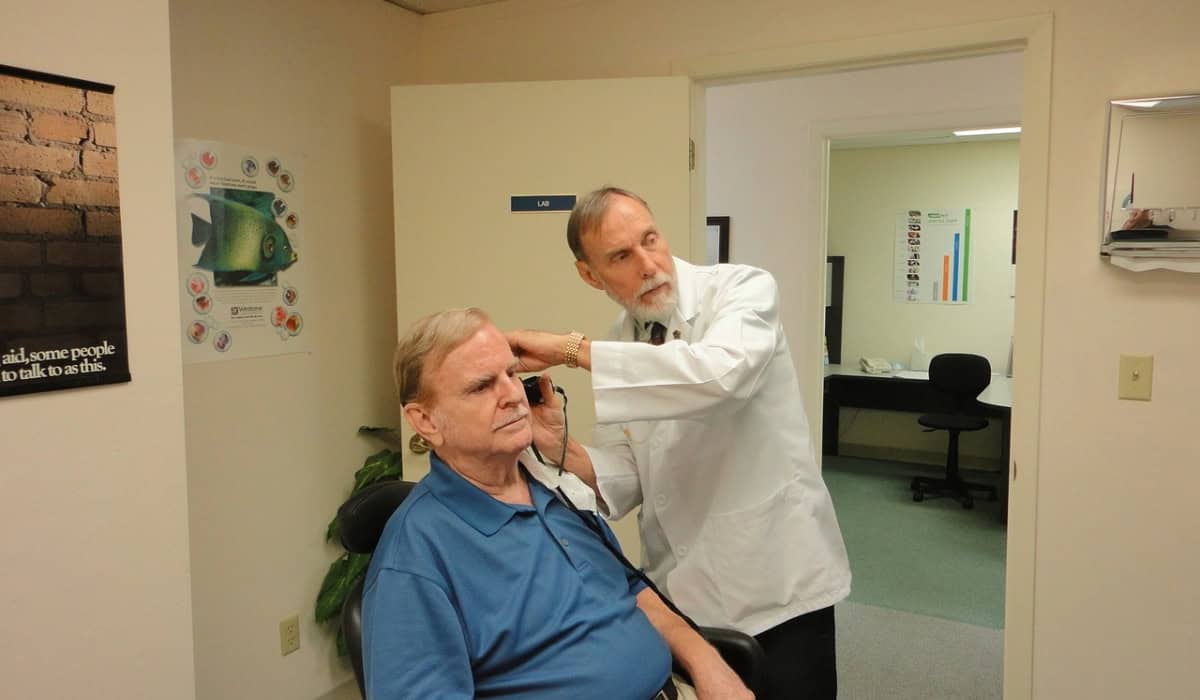Understanding Your Hearing Test Results and Next Steps
When you get hearing tests, the results can seem confusing at first. An audiogram is a tool that helps to show the state of your hearing, from normal hearing to moderate, severe, and profound hearing loss. By learning how to interpret an audiogram, you’ll understand how well you can hear frequencies, from low to high-frequency sounds, and the intensity of sounds, from quiet sounds around 15 dB to loud sounds like background noise at 90 dB. It also shows how you hear softer sounds in noisy environments. This understanding provides valuable insights into any issues affecting your hearing, including whether the problem lies in the ear canal, the auditory nerve, or both, as indicated by air conduction and bone conduction thresholds.
The Basics of Audiogram Interpretation
An audiogram is a graph that plots how you hear sounds of different volumes and pitches, similar to how keys on a piano range from low to high. The graph represents your hearing capabilities by showing the softest sounds you can hear, like a bird chirping, and gradually moves to louder sounds, all the way up to 120 dB, the level of very loud noises.
Understanding the Audiogram Graph
The audiogram graph is a visual map of your hearing sensitivity and potential hearing. It charts your hearing capabilities across various frequencies and intensities, helping you visualize how well you can detect both high and low sounds, from whispers to loud shouts.
Deciphering the X-Axis and Y-Axis
The audiogram represents your hearing by using two main axes: the X-axis and the Y-axis. The X-axis shows different frequencies, from low to high, while the Y-axis represents loudness, moving from softer sounds at the top to louder sounds at the bottom. This setup helps to clearly show where your hearing sensitivity lies for different types of sounds.
Audiogram Symbols Unveiled
Audiogram symbols are key to understanding your specific hearing loss. Each symbol on the graph represents a different aspect of how you hear with each ear during the test, offering insights into your hearing health that your audiologist can explain in detail.
The Significance of Air and Bone Conduction
Air and bone conduction testing are crucial parts of an audiogram. They show how sound travels through your ear canal to the auditory nerve. By measuring thresholds, these tests help identify the degrees of hearing loss, distinguishing between issues in the outer/middle ear and the inner ear.
Identifying Your Level and Type of Hearing Loss
Understanding your audiogram results helps you and your hearing specialist identify not just the level of your hearing loss, but also its type. This is crucial for finding the right treatment. The speech banana, a visual representation on the audiogram, shows where common speech sounds fall, helping pinpoint difficulties with specific low-pitched sounds.
Classifying Hearing Loss Through Audiogram Results
Your audiogram results and the speech banana guide your hearing specialist in assessing your auditory health. By analyzing how well you hear low-pitched sounds, they can classify your hearing loss, providing a clear path to addressing your specific needs.
From Healthy Hearing to Profound Hearing Loss
An audiogram maps out all hearing levels, from healthy hearing to profound hearing loss. Understanding this range is the first step in acknowledging your potential hearing challenges and seeking the necessary help.
Sensorineural vs. Conductive vs. Mixed Hearing Loss
Deciphering your hearing test results is essential for understanding whether you have sensorineural, conductive, or mixed hearing loss. This knowledge is fundamental in tailoring the right treatment plan for you.
The Crucial Difference Between Sensorineural and Conductive Hearing
The key difference between sensorineural and conductive hearing loss lies in where the problem occurs. Sensorineural affects the inner ear or auditory nerve, while conductive involves the outer or middle ear. Recognizing this helps in addressing the specific issues impacting your healthy hearing.
The Audiogram Explained: Frequencies, Intensity, and Thresholds
An audiogram breaks down how you hear sounds across a wide range of frequencies, from low to high, showing how sounds become higher pitched, like moving from a deep bass to a high note on a violin. It also illustrates how you perceive quieter sounds, giving a comprehensive look at your hearing abilities.
The Importance of Hearing Thresholds
Hearing thresholds across various frequencies are vital for understanding the softest sounds you can detect. This information is crucial for diagnosing the degree and type of hearing loss you may be experiencing.
Air Conduction Thresholds and Bone Conduction Thresholds
By comparing air conduction thresholds and bone conduction thresholds, your hearing specialist can assess the degree of hearing loss and how it affects your daily lives. This comparison helps identify whether sound is moving through your ear as it should.
Uncovering the Air-Bone Gap
The presence of an air-bone gap on your audiogram indicates mixed hearing loss, revealing differences in how well you hear sounds through air versus bone conduction. This gap is key in diagnosing and treating your specific hearing issues.
Frequency vs Intensity: A Detailed Analysis
When you look at your audiogram, you’ll see two main things: frequency and intensity. Frequency is about the pitch of sounds, from low to high, like the difference between a tuba and a flute. Intensity is how loud or soft those sounds are, measured in decibels. By understanding these, you can see not just if you have trouble hearing, but what kinds of sounds are hardest for you. Maybe low-frequency sounds like a bass guitar are easy, but high-frequency sounds like birds chirping are tough.
Advanced Audiogram Insights
Audiograms hold more secrets than you might think at first glance. They’re not just charts; they’re a window into your hearing capabilities. By diving deeper, you can uncover details about your hearing sensitivity, such as how well you hear in noisy environments or if one ear hears better than the other. This information is crucial for tailoring your treatment to fit your specific needs, helping you hear your best.
Why Audiogram Graphs Are Upside Down
Have you ever wondered why audiogram graphs look upside down? It’s because they’re designed to show how your hearing compares to normal hearing levels. The top of the graph represents the quietest sounds you can hear, and as you move down, the sounds get louder. So, if your marks are near the top, you’re hearing well! But if they’re towards the bottom, it means those sounds need to be louder for you to hear them.
Deciphering Additional Symbols and Abbreviations
Audiograms use a variety of symbols and abbreviations to provide a detailed look at your hearing health. For example, an “O” might stand for your right ear’s responses, and an “X” for your left. There might also be symbols showing how well you hear when sounds are played through earphones versus in an open room. Getting to know these symbols helps you understand the full picture of your hearing capabilities.
Treatment and Management Options for Hearing Loss
Finding the right treatment for hearing loss starts with understanding your audiogram. Depending on your type of hearing loss, different options can help. This might include hearing aids for mild hearing issues or more involved treatments for severe loss. The key is to address your degree of hearing loss early to avoid further communication difficulties and improve your quality of life.
When Are Hearing Aids Recommended?
Hearing aids are usually recommended when your audiogram shows that you have difficulty hearing across a range of frequencies, especially if this impacts your ability to communicate in daily life. They’re designed to amplify sounds, making it easier for you to hear conversations, TV, and other important sounds. The decision to use hearing aids depends on your specific needs and lifestyle, aiming to enhance your hearing capabilities.
Hearing Aids and Assistive Listening Devices
Beyond hearing aids, there are assistive listening devices that can help in specific situations, like watching TV, talking on the phone, or hearing in noisy places. These devices work by making the sound clearer, not just louder. They can be used with or without hearing aids and are often customizable to fit your hearing health needs. This tailored approach ensures you get the most benefit from your devices.
Beyond Hearing Aids: Exploring Other Treatment Options
For those whose hearing loss can’t be fully helped with hearing aids, other options like cochlear implants may be explored. These devices are designed for individuals with severe hearing impairment, bypassing the damaged parts of the ear to directly stimulate the auditory nerve. This treatment option can open up a new world of sounds to those who qualify, enhancing their ability to communicate effectively.
Tinnitus Management Strategies
For many, tinnitus, or ringing in the ears, is a challenging aspect of hearing loss. Managing it involves strategies like sound therapy, which uses external sounds to help your brain focus less on the tinnitus. Counseling and lifestyle changes can also play a significant role in coping with tinnitus, making it less intrusive in your daily life. These strategies can provide relief and improve your overall hearing health.
Taking Action: From Understanding to Treatment
Understanding your audiogram is just the start. The next step is to take action by exploring treatment options and seeking professional advice. Whether it’s age-related hearing loss or difficulty hearing high-pitched sounds, there are solutions available. From hearing aids to assistive devices, taking action can significantly improve your quality of life and keep you connected to the world around you.
Interpreting Results and Seeking Counseling
After getting the results of your hearing test, seeking counseling from a hearing care professional can provide valuable insight. They can explain your audiogram in detail, helping you understand your hearing health and the treatment options available. This guidance is crucial for making informed decisions about managing your hearing loss and taking the next steps towards better hearing.
Scheduling Your Next Steps
Once you have a clear understanding of your hearing health and the treatment options available, it’s time to schedule your next steps. This might include trying out hearing aids or assistive devices, or maybe even scheduling a procedure for cochlear implants. The key is to move forward with a plan that meets your specific needs, ensuring the best possible outcome for your hearing.
Finding a Qualified Hearing Care Provider
Finding a qualified hearing care provider is essential for getting the right treatment. Look for someone who is not only knowledgeable about the latest hearing technology but also compassionate and understanding of your personal needs. They should offer comprehensive testing and follow-up care, helping you make informed decisions about your hearing health and the best treatment options for you.
The Future of Hearing Health
The future of hearing health is bright, with advances in technology and treatment options continuously emerging. Staying informed and proactive about your hearing health, especially if you’re experiencing hearing difficulties, can make a big difference. Regular hearing assessments and timely interventions can help maintain and even improve your hearing capabilities, ensuring a higher quality of life.
The Role of Regular Hearing Assessments
Regular hearing assessments play a crucial role in maintaining your hearing health. These assessments can catch changes in your hearing early, allowing for timely intervention. Whether it’s updating your hearing aids, exploring new treatment options, or simply getting advice on protecting your hearing, regular check-ups ensure your hearing needs are met. Staying proactive about your hearing health is key to enjoying life’s sounds to the fullest.
Staying Informed and Proactive in Hearing Loss Treatment
Understanding your hearing health is a journey, especially if you’re facing challenges like severe and profound hearing loss. By keeping up with regular hearing check-ups, you’re taking a powerful step towards staying in control of your hearing. It’s important to stay up-to-date on the latest treatments and hearing aids that can make a difference in your life. Remember, being proactive means more than just reacting to changes in your hearing; it’s about preparing for the future and ensuring you have the support and tools you need to continue enjoying the sounds around you.
Wrapping It Up: A Comprehensive Guide to Your Audiogram
Understanding your audiogram is like reading a map that shows the journey of your hearing. It’s a visual representation of your hearing abilities, detailed on a graph that displays where your strengths and weaknesses lie in terms of hearing different sounds. By now, you should feel more confident in interpreting the symbols and lines, knowing not just your hearing level but also the type of hearing loss you might have. Remember, this guide is a stepping stone to taking action, whether that’s getting hearing aids, exploring other treatments, or simply staying informed. Your hearing health is crucial, and with this knowledge, you’re better equipped to take care of it.






